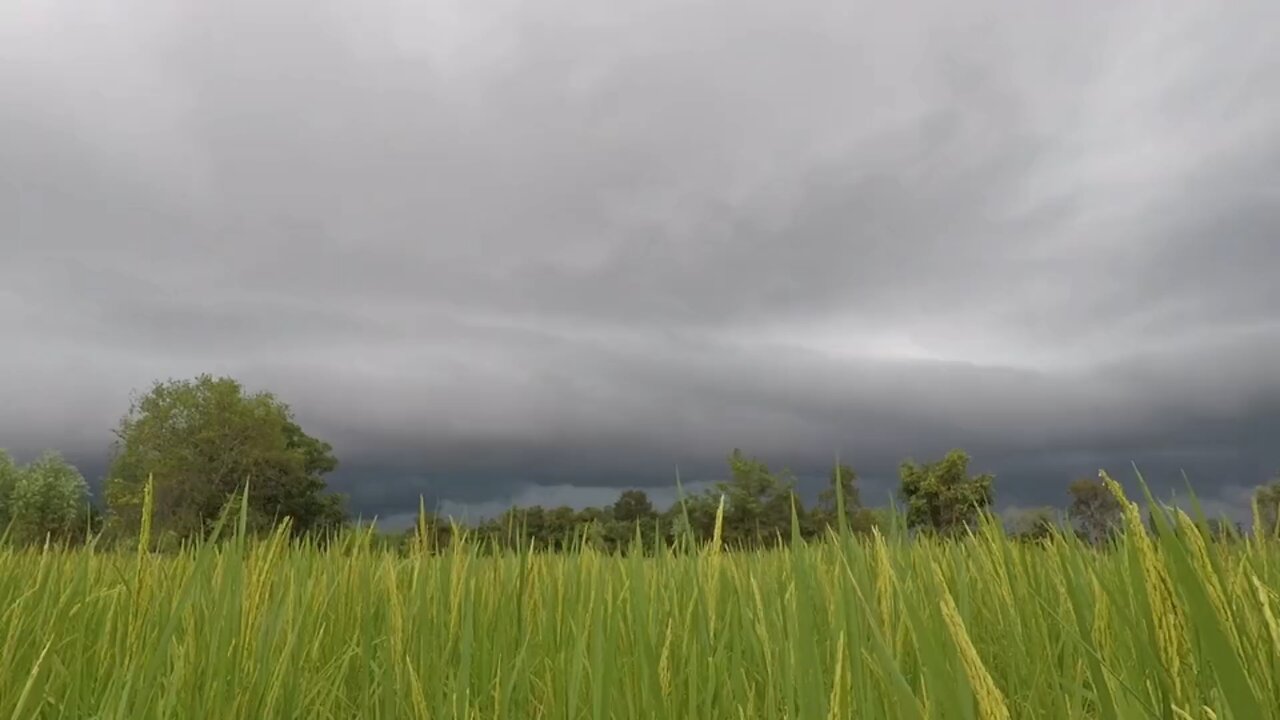Premium Only Content

"Rice Unveiled: The Fascinating World of Oryza sativa"
*Oryza sativa*, commonly known as rice, is one of the world’s most important staple crops, feeding over half of the global population. Here’s a detailed overview:
### 1. **Origin and History**
- **Domestication**: *Oryza sativa* was domesticated over 10,000 years ago, with two major subspecies emerging: *Oryza sativa japonica* (short-grain, sticky rice) and *Oryza sativa indica* (long-grain, non-sticky rice).
- **Geographical Spread**: Rice cultivation began in the Yangtze River basin in China and spread across Asia, Africa, and later to the Americas and Europe.
### 2. **Biological Characteristics**
- **Plant Structure**: Rice plants are grass species, typically growing 3-6 feet tall, with slender, elongated leaves and drooping panicles where the grains develop.
- **Life Cycle**: Rice is an annual plant with a life cycle that includes germination, vegetative growth, reproductive development, ripening, and harvesting.
- **Adaptability**: Rice is highly adaptable, capable of growing in various environments, including flooded fields (paddy fields), rain-fed lowlands, uplands, and deep water.
### 3. **Cultivation Practices**
- **Planting Methods**:
- **Direct Seeding**: Sowing seeds directly into the field, often used in rain-fed and upland areas.
- **Transplanting**: Seedlings are first grown in nurseries and then transplanted into fields, common in irrigated and paddy fields.
- **Water Management**: Rice requires a lot of water, with flooded conditions preferred during most of its growth cycle. Systems like the System of Rice Intensification (SRI) aim to reduce water use.
- **Soil and Nutrients**: Rice thrives in fertile, well-drained soils with high organic content. Nitrogen, phosphorus, and potassium are key nutrients for growth.
### 4. **Varieties of Rice**
- **Japonica vs. Indica**: Japonica is shorter, rounder, and stickier when cooked. Indica is longer, slender, and remains fluffy.
- **Aromatic Varieties**: Includes Basmati (India) and Jasmine (Thailand), known for their fragrant aroma.
- **Glutinous Rice**: Often called sticky rice, used in Asian desserts and traditional dishes.
- **Wild Rice**: Not true rice, but a different species (genus *Zizania*) found in North America.
### 5. **Economic and Cultural Importance**
- **Global Staple**: Rice is the primary source of calories for more than half of the world’s population, particularly in Asia and Africa.
- **Economic Impact**: Rice is a major agricultural product in countries like China, India, Indonesia, Vietnam, and Thailand, driving both domestic economies and international trade.
- **Cultural Significance**: Rice plays a central role in many cultures, symbolizing fertility, prosperity, and sustenance. It’s a staple in festivals, religious ceremonies, and daily diets.
### 6. **Challenges in Rice Production**
- **Climate Change**: Global warming, unpredictable rainfall patterns, and rising sea levels threaten rice production, particularly in low-lying regions.
- **Pests and Diseases**: Rice plants are susceptible to pests like the rice blast fungus, brown planthopper, and bacterial blight, which can drastically reduce yields.
- **Water Scarcity**: As freshwater resources become scarcer, traditional water-intensive rice farming practices are being challenged, leading to the adoption of more water-efficient methods.
### 7. **Nutritional Value**
- **Carbohydrates**: Rice is a rich source of carbohydrates, providing energy for daily activities.
- **Vitamins and Minerals**: Brown rice, in particular, is a good source of B vitamins, magnesium, and fiber, whereas white rice is often enriched with additional nutrients.
- **Protein**: Although not high in protein, rice is an important part of many diets when combined with legumes and vegetables.
### 8. **Rice in Cuisine**
- **Versatility**: Rice can be prepared in countless ways—boiled, steamed, fried, or baked. It’s a foundation for dishes like sushi, risotto, paella, and biryani.
- **Global Dishes**: Each culture has its signature rice dish, such as Japan’s sushi, Spain’s paella, India’s biryani, and Italy’s risotto.
### 9. **Future of Rice Cultivation**
- **Sustainable Farming**: Innovations in rice farming include genetic modification, improved irrigation techniques, and organic farming to ensure sustainability.
- **Biofortification**: Efforts like the development of Golden Rice, enriched with Vitamin A, aim to address nutrient deficiencies in rice-dependent populations.
If you need more information on a specific aspect of *Oryza sativa*, feel free to ask!
-
![[Ep 717] NEVER Apologize to The Counterculture Mob! Be You, Be True | Oprah & “Elites” God Complex](https://1a-1791.com/video/fww1/81/s8/1/-/G/X/6/-GX6y.0kob.1-small-Ep-717-NEVER-Apologize-to-T.jpg) UPCOMING
UPCOMING
The Nunn Report - w/ Dan Nunn
50 minutes ago[Ep 717] NEVER Apologize to The Counterculture Mob! Be You, Be True | Oprah & “Elites” God Complex
11 -
 1:38:10
1:38:10
The Quartering
2 hours agoKash Patel "Discovers" Secret FBI Files On Trump, NYC Shooter New Conspiracy, Planned Parenthood
102K16 -
 LIVE
LIVE
Crypto Power Hour
2 hours ago $0.75 earnedSmart Contracts On The Blockchain
107 watching -
 1:00:03
1:00:03
Russell Brand
4 hours agoRand Paul: Trump, Tariffs & The Tyranny of Centralized Power - SF623
129K101 -
 9:01
9:01
Dr. Nick Zyrowski
1 month agoThe BIG NAC ( N-Acetyl Cysteine) Mistake
9.57K9 -
 2:12:44
2:12:44
Tucker Carlson
4 hours agoJohn Mearsheimer: The Palestinian Genocide and How the West Has Been Deceived Into Supporting It
70.8K92 -
 39:30
39:30
The White House
3 hours agoPresident Trump Signs Congressional Bill, July 30, 2025
22.3K19 -
 LIVE
LIVE
GritsGG
7 hours agoWin Streaking All Day! Most Wins 3215+!
57 watching -
 1:10:52
1:10:52
Sean Unpaved
3 hours agoGameplan & Glam: Sanders' Reps Snub, NFC North Heatwave, MLB Deadline Surge, Sweeney's Eagle Glow
24.4K -
 3:52
3:52
Michael Heaver
11 hours agoPanicked Labour Now Completely IMPLODING
21.7K4